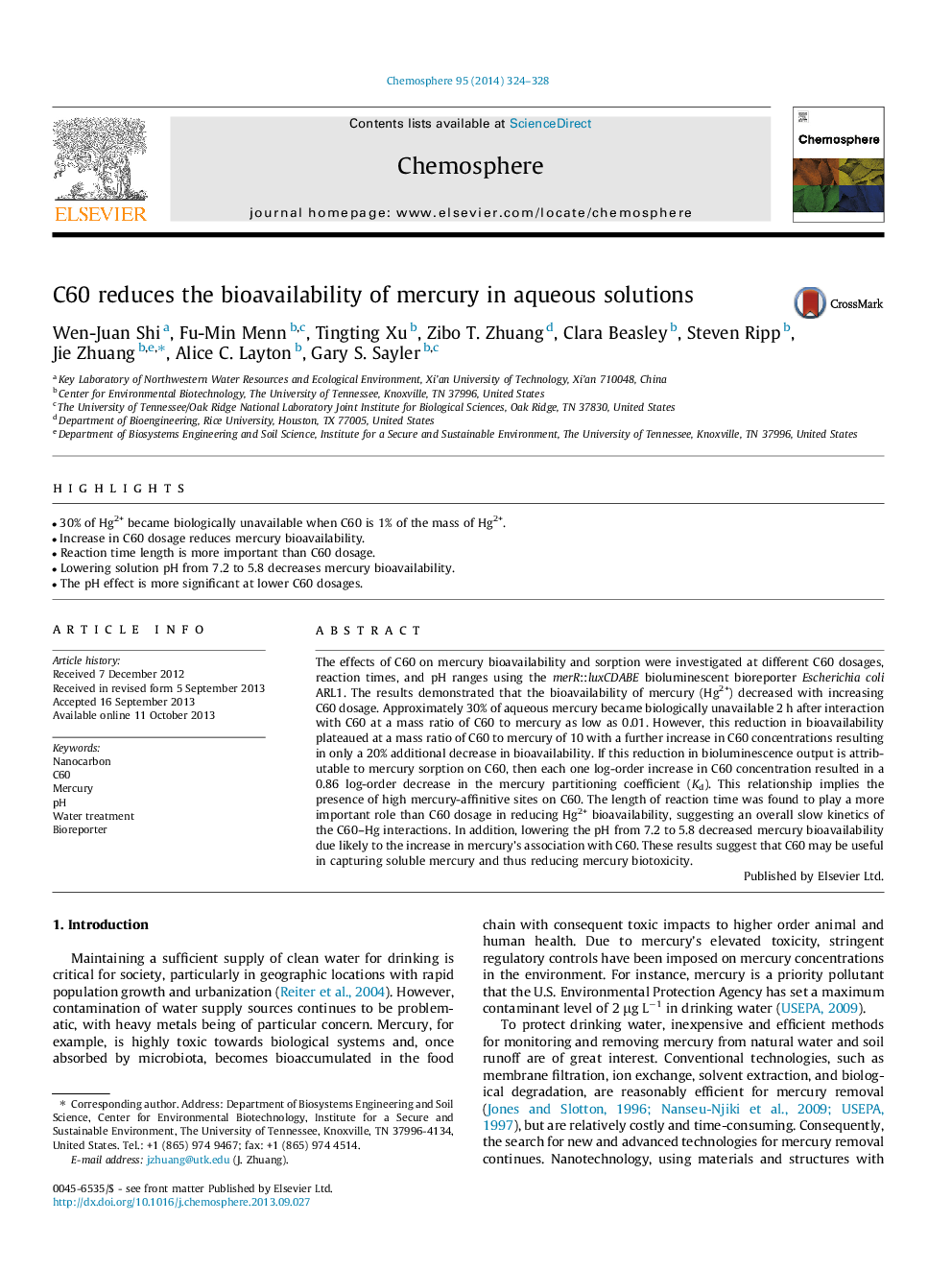| کد مقاله | کد نشریه | سال انتشار | مقاله انگلیسی | نسخه تمام متن |
|---|---|---|---|---|
| 6309818 | 1618876 | 2014 | 5 صفحه PDF | دانلود رایگان |
عنوان انگلیسی مقاله ISI
C60 reduces the bioavailability of mercury in aqueous solutions
دانلود مقاله + سفارش ترجمه
دانلود مقاله ISI انگلیسی
رایگان برای ایرانیان
موضوعات مرتبط
علوم زیستی و بیوفناوری
علوم محیط زیست
شیمی زیست محیطی
پیش نمایش صفحه اول مقاله

چکیده انگلیسی
The effects of C60 on mercury bioavailability and sorption were investigated at different C60 dosages, reaction times, and pH ranges using the merR::luxCDABE bioluminescent bioreporter Escherichia coli ARL1. The results demonstrated that the bioavailability of mercury (Hg2+) decreased with increasing C60 dosage. Approximately 30% of aqueous mercury became biologically unavailable 2Â h after interaction with C60 at a mass ratio of C60 to mercury as low as 0.01. However, this reduction in bioavailability plateaued at a mass ratio of C60 to mercury of 10 with a further increase in C60 concentrations resulting in only a 20% additional decrease in bioavailability. If this reduction in bioluminescence output is attributable to mercury sorption on C60, then each one log-order increase in C60 concentration resulted in a 0.86 log-order decrease in the mercury partitioning coefficient (Kd). This relationship implies the presence of high mercury-affinitive sites on C60. The length of reaction time was found to play a more important role than C60 dosage in reducing Hg2+ bioavailability, suggesting an overall slow kinetics of the C60-Hg interactions. In addition, lowering the pH from 7.2 to 5.8 decreased mercury bioavailability due likely to the increase in mercury's association with C60. These results suggest that C60 may be useful in capturing soluble mercury and thus reducing mercury biotoxicity.
ناشر
Database: Elsevier - ScienceDirect (ساینس دایرکت)
Journal: Chemosphere - Volume 95, January 2014, Pages 324-328
Journal: Chemosphere - Volume 95, January 2014, Pages 324-328
نویسندگان
Wen-Juan Shi, Fu-Min Menn, Tingting Xu, Zibo T. Zhuang, Clara Beasley, Steven Ripp, Jie Zhuang, Alice C. Layton, Gary S. Sayler,